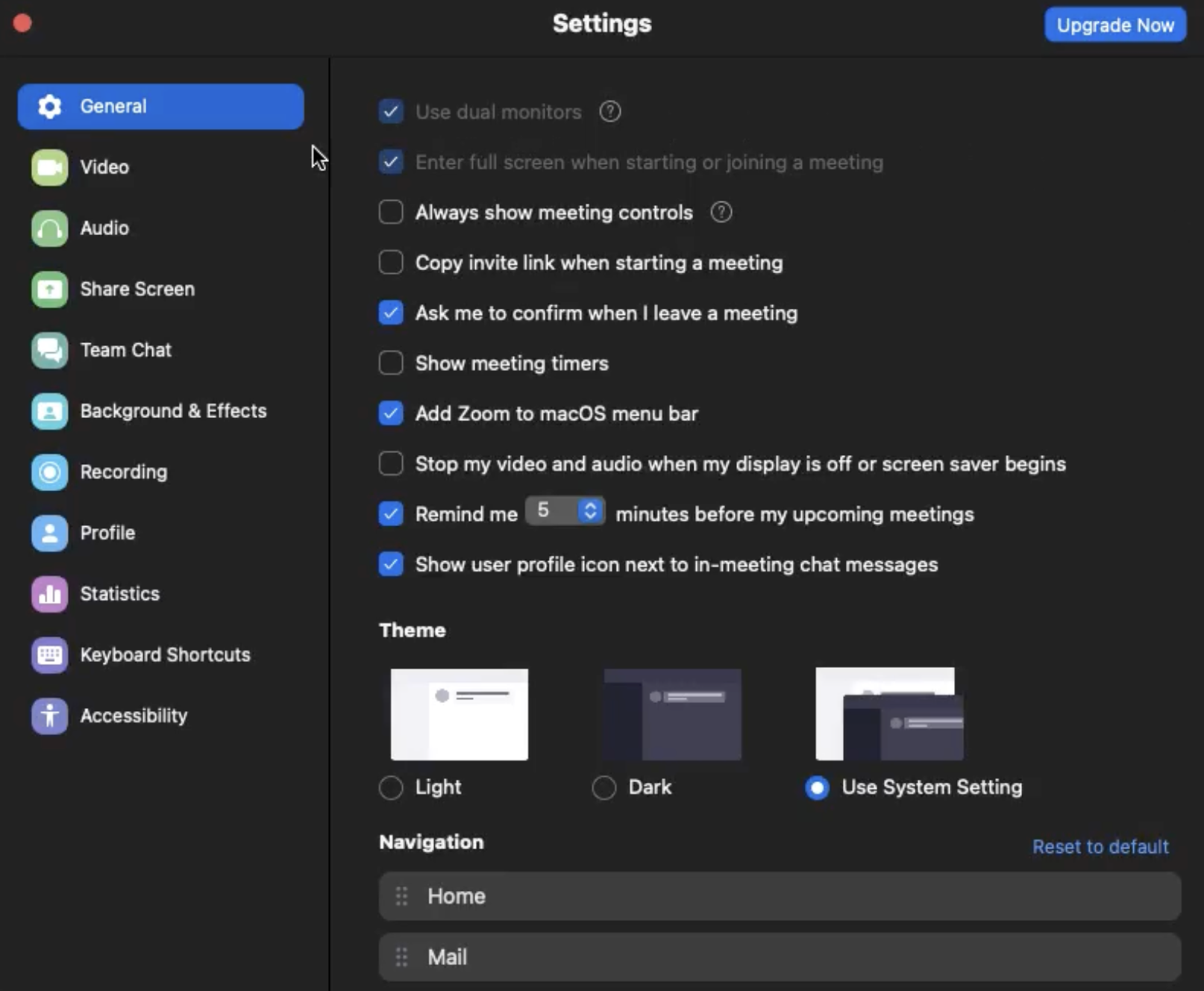Category filter
Configuration profile to change Zoom app settings on Mac
Zoom is a widely used video conferencing software that enables users to connect online. By using a configuration profile, IT administrators can manage Zoom app settings on Mac, such as enabling or disabling screen sharing, recording, virtual backgrounds, and much more. This can help ensure that the Zoom users in the organization have the necessary settings configured. IT admins can configure app settings for the Zoom app on Mac by deploying a configuration profile using Hexnode’s Deploy Custom Configuration feature.
Configure app settings for Zoom
|
1 2 3 4 5 6 7 8 9 10 11 12 13 14 15 16 17 18 19 20 21 22 23 24 25 26 27 28 29 30 31 32 33 34 35 36 37 38 39 40 41 42 43 44 45 46 47 48 49 50 51 52 53 54 55 56 57 58 59 60 61 62 63 64 65 66 67 |
<?xml version="1.0" encoding="UTF-8"?> <!DOCTYPE plist PUBLIC "-//Apple//DTD PLIST 1.0//EN" "http://www.apple.com/DTDs/PropertyList-1.0.dtd"> <plist version="1.0"> <dict> <key>PayloadContent</key> <array> <dict> <key>AU2_EnableShowZoomUpdates</key> <false/> <key>DisableDesktopShare</key> <true/> <key>DisableMeetingReactions</key> <true/> <key>DisableScreenShare</key> <true/> <key>DisableVideoFilters</key> <true/> <key>DisableVirtualBkgnd</key> <true/> <key>DisableWhiteBoard</key> <true/> <key>DisableZoomApps</key> <true/> <key>EnableMirrorEffect</key> <false/> <key>FullScreenWhenJoin</key> <true/> <key>NoFacebook</key> <true/> <key>NoGoogle</key> <true/> <key>NoSSO</key> <true/> <key>PayloadDisplayName</key> <string>Zoom</string> <key>PayloadIdentifier</key> <string>us.zoom.config.290336AE-AB44-42F9-A54D-1EDD457C19FC</string> <key>PayloadType</key> <string>us.zoom.config</string> <key>PayloadUUID</key> <string>290336AE-AB44-42F9-A54D-1EDD457C19FC</string> <key>PayloadVersion</key> <integer>1</integer> <key>SetSuppressBackgroundNoiseLevel</key> <string>2</string> <key>ZDualMonitorOn</key> <true/> <key>ZUse720PByDefault</key> <true/> <key>zDisableChat</key> <true/> <key>zDisableLocalRecord</key> <true/> </dict> </array> <key>PayloadDisplayName</key> <string>Untitled</string> <key>PayloadIdentifier</key> <string>7F13E4DE-C754-4EC2-88AE-6272EA33B368</string> <key>PayloadType</key> <string>Configuration</string> <key>PayloadUUID</key> <string>B3397A0D-94B9-4996-A80E-75397AAB8118</string> <key>PayloadVersion</key> <integer>1</integer> </dict> </plist> |
The below table shows each key that is used in the profile and its use:
| Keys | Description |
|---|---|
| NoFacebook | Set the value to ‘false’, if you want to disable the Facebook login option for your users. |
| NoSSO | Set the value to ‘false’, if you want to disable the SSO login option for your users. |
| NoGoogle | Set the value to ‘false’, if you want to disable the Google login option for your users. |
| AU2_EnableShowZoomUpdates | Set the value to ‘false’, if you want to hide the Zoom updates settings from your users. |
| DisableDesktopShare | Set the value to ‘true’, if you do not want your users to share their desktop screen with other participants. |
| DisableMeetingReactions | Set the value to ‘true’, if you don’t want your users to use reactions during meetings. |
| DisableScreenShare | Set the value to ‘true’, if you don’t want your users to share their screen with other participants during a meeting. |
| DisableVideoFilters | Set the value to ‘true’, if you don’t want your users to use any video filter on their video. |
| DisableVirtualBkgnd | Set the value to ‘true’, if you don’t want your users to mask their background and disable the virtual background option in the setting. |
| DisableWhiteBoard | Set the value to ‘true’, if you want to disable the classic whiteboard feature during the meeting for your users. |
| DisableZoomApps | Set the value to ‘true’ if you want to hide the Zoom App option within the Zoom app’s Settings. This will prevent users from adding any in-product apps that can be integrated into the Zoom experience. |
| EnableMirrorEffect | Set the value to ‘false’, if you don’t want your users to mirror their video during the meeting. |
| FullScreenWhenJoin | Set the value to ‘true’, if you want your user’s meeting window to automatically go full screen when joining a meeting. |
| SetSuppressBackgroundNoiseLevel | Adjust the level of background noise suppression accordingly:
|
| ZDualMonitorOn | Set the value to ‘true’, if you want your users to see the other participants and content shared during the meeting on separate screens. |
| ZUse720PByDefault | Set the value to ‘true’, if you want your users to enable HD video during the meeting. |
| zDisableChat | Set the value to ‘true’, if you want to hide the chat option from the users where participants can converse via text and share files during the meeting. |
| zDisableLocalRecord | Set the value to ‘true’, if you want to hide the record button available for recording the meeting from the users. |
For more information on managing and customizing app settings in the Zoom app, refer to Zoom support.
What happens at the device end?
After the deployment of the configuration profile, the Zoom application on the Mac will be configured according to the settings specified in the profile. For instance, let’s consider the following two keys:
- ZDualMonitorOn: This key is set to true in the provided configuration profile. Once the configuration profile is deployed, the Zoom app on macOS devices will enable dual monitor support, allowing users with two monitors to utilize both screens for an improved meeting experience. The “Use dual monitors” option will be enabled and greyed out in Settings > General.
- FullScreenWhenJoin: This key is set to true as well. Once the configuration profile is deployed, the Zoom application will automatically launch in full-screen mode whenever a user joins a meeting. Additionally, the “Enter full screen when starting or joining a meeting” option will be enabled and greyed out in the Zoom app’s Settings > General.



